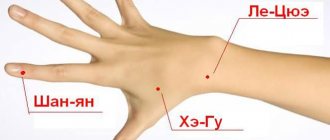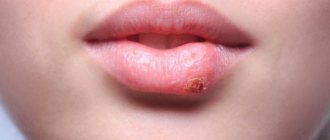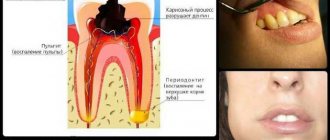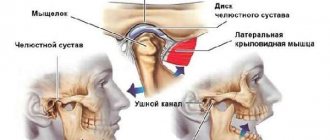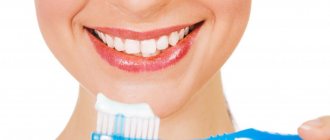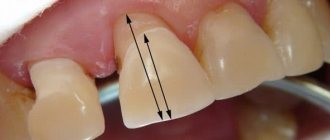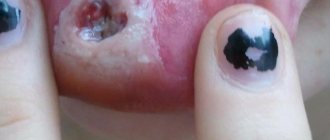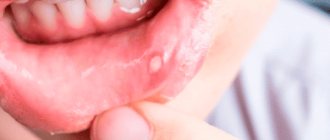Gingivitis: causes and symptoms
In order to know how to treat gingivitis, it is necessary to study at least brief information about this disease and the mechanisms of its occurrence. Gingivitis is a fairly common dental disease, which is an inflammation of the gums, which can be treated with dental ointments and rinses. These rules are similar for the prevention of stomatitis.
The occurrence of gingivitis is often associated with improper oral care, which results in the formation of plaque consisting of bacteria. This sticky substance accumulates along the edges of the gums and in places that are difficult to reach with a regular toothbrush.
In most cases, the causative agents of gingivitis are pathogenic microorganisms that live in the oral cavity of healthy people. The immune system does not allow bacteria to manifest itself, but when it weakens, the virus begins to progress in the body. Among the reasons that can trigger the development of the disease are the following:
- Neglect of dental treatment;
- Poor quality prosthetics and installation of braces;
- Diabetes;
- Viral diseases of the upper respiratory tract;
- Hormonal imbalance, for example, during pregnancy;
- Unbalanced diet, especially lack of vitamins C;
- Nicotine abuse.
Many experts do not consider gingivitis to be an independent disease. In their opinion, the disease develops against the background of other pathologies that contribute to a decrease in the body’s immune defense.
Symptoms of simple gingivitis include swelling and redness of the gums, which may bleed when eating or brushing teeth, and gums often pull away from the teeth. The general clinical picture of the disease looks like this:
- Increased sensitivity of teeth and gums;
- The appearance of dental plaque and tartar;
- Bad breath;
- Swelling;
- Pain and burning when biting;
- Soft tissue necrosis.
There may be no pain, but with acute gingivitis there is already severe pain. In addition, if gingivitis is not treated promptly, complications may develop and numerous ulcers may appear.
Disease prevention
You can prevent gingivitis by following these recommendations:
- Brush your teeth only with a soft-bristled brush;
- visit the dentist once every six months for a preventive examination;
- ask your dentist about the rules for using dental floss, clean the dental spaces without injuring the gums;
- Sanitate the oral cavity after every meal;
- use effective herbal-based toothpastes, without fluoride or preservatives. They do an excellent job of removing plaque and preventing the formation of tartar;
- Be sure to clean your tongue. Many pathogenic microorganisms accumulate on it, they spread over the entire surface of the oral cavity, causing dental problems.
Treatment of gingivitis using traditional medicine is an effective healing process that gives good results in a short period of time. Use the recipes, be healthy!
More details about the treatment of gingivitis in the following video:
Types of diseases
There are several types of gingivitis, so for effective treatment it is necessary to determine the form of the disease. The following options are possible here:
- Catarrhal. One of the most common forms, which is diagnosed in most patients. The disease manifests itself as bleeding gums and discomfort when pressing on soft tissues.
- Hypertrophic. Usually diagnosed during adolescence. The source of inflammation is located in the area of the front teeth. A characteristic feature of this form of the disease is the proliferation of interdental papillae, and soft tissue hyperplasia is possible.
- Ulcerative-necrotic. This is an advanced stage, which is manifested by acute pain, ulcers in the mouth, and excessive salivation. Patients experience lack of appetite, high fever, and enlarged lymph nodes.
- Atrophic. The most severe form, in which atrophy of soft tissues is observed, the roots of the teeth are exposed. Characteristic signs of this disease are a gray tint of the mucous membrane and bad breath. The patient experiences general weakness and severe pain.
According to the form of its occurrence, gingivitis is divided into chronic and acute. In the first case, the disease does not have pronounced symptoms, there is practically no pain, the gums bleed only when brushing the teeth. In the second, the disease manifests itself more acutely and gives the patient a lot of discomfort.
Symptoms of the disease
Depending on the nature of the changes, several forms of gingivitis are distinguished::
- Catarrhal. It is characterized by unpleasant sensations in the gum area, bad breath appears, the taste of food changes, and the gums bleed while eating it. With chronic or acute catarrhal gingivitis, pain in the gums during meals increases significantly, which is associated primarily with mechanical/chemical irritants. The acute form of catarrhal gingivitis is a concomitant disease with acute infectious processes in the body. When examining the gums, severe swelling, cyanosis, and isolated erosions are observed (mainly at the tips of the interdental papillae).
- Hypertrophic. Chronic form of gingivitis. Hypertrophic processes most often occur in the frontal areas of the upper and lower jaw, in areas of close proximity of teeth, as well as in abnormal parts of the jaws, which place increased stress on certain parts of the gums. The hypertrophied variety of gingivitis is presented in two forms: generalized and localized. In the first case, the disease develops with abnormal positioning of teeth, injuries to the mucous membrane, overhanging fillings, etc. In the second, with endocrine disruption, in adolescents in puberty, with hypovitaminosis C, etc.
- Ulcerative. Often develops in children against the background of acute catarrhal disease. Its characteristic features are necrosis, ulceration with a decrease in the reactivity of the body, etc. The development of the disease often occurs after severe hypothermia, an infectious disease, teething, etc. The first symptoms of the ulcerative form of the disease will be swelling and bleeding of the gums. Over time, the gingival papillae become covered with a gray-green coating. A soft plaque that is difficult to remove also forms on the teeth. The tongue is coated. Saliva is very viscous.
Why is it important to see a doctor?
When the first signs of gingivitis appear, you should immediately contact a qualified dentist or periodontist. This is necessary in order to confirm the diagnosis. In terms of external signs, gingivitis resembles periodontal disease or periodontitis, however, there are significant differences between these ailments.
Treatment of gingivitis is carried out according to a single scheme, regardless of the cause of the disease. Treatment usually takes place in two stages: oral hygiene (performed by a dentist) and local rinsing with antiseptic solutions.
In particular, gingivitis affects only the gums, without affecting the bone tissue. With periodontal disease, the picture is the opposite: the teeth begin to loosen, while practically no inflammation is observed in the gums. However, only an experienced doctor can determine this difference. After confirmation of the diagnosis, a treatment regimen is prescribed.
Important! The doctor must be truly experienced. In case of periodontal disease, potentially dangerous teeth are removed. With proper treatment of gingivitis, teeth are usually preserved.
Lubricating gums with folk remedies
A positive result in the treatment of gingivitis can be achieved by rubbing the gums with special compounds. You can prepare the product yourself at home. To do this, take 1 tbsp. l. chopped St. John's wort and add 100 ml of any oil. The mixture is boiled and allowed to cool for 2 hours. Apply the medicine to the gums 3-4 times. You can also prepare a medicine based on mint, calendula and sage. The products are good at relieving inflammation from soft tissues and eliminating swelling.
Rose oil mixed with vegetable oil in a ratio of 4 drops to 2 tbsp is well suited for lubricating gums with gingivitis. l. respectively
You can treat the affected areas with honey and other bee products (propolis, royal jelly). The procedure is performed 4 times a day before meals. Rubbing the gums with herbal ingredients can cure gingivitis in 7-10 days. But even after the symptoms of the pathology (bleeding gums, pain and inflammation) disappear, it is recommended to continue therapy to consolidate the result. In addition, consultation with a doctor regarding the disease and prevention of its relapse is required.
Diagnostics
Diagnosis of gingivitis is carried out in several ways, which are used in combination. At the initial stage, the doctor collects anamnesis:
- The diet and bad habits are revealed;
- The reasons for tooth extraction/loss are clarified;
- Genetic predisposition is determined.
After this, an examination of the oral cavity is carried out, the depth of the dental canals is studied with a special probe. Additional methods of diagnostic testing include x-rays and testing the sensitivity of the pulp.
The following methods can be used to diagnose gingivitis:
- Fedorov-Volodkina index;
- RMA index;
- Schiller-Pisarev test.
Treatment of hypertrophic gingivitis
The principle and procedure for carrying out treatment procedures is similar to those for catarrhal gingivitis. However, the hypertrophic form sometimes requires surgical intervention.
Gingivectomy is a procedure performed to remove diseased tissue. Its stages can be seen in the figure below. Gingivectomy allows you to get rid of a large amount of excess tissue and prevent the accumulation of plaque, as well as stop the intensification of the inflammatory process.
Stages of gingivectomy
Treatment of gingivitis at home
Treatment of gingivitis at home is possible, but only if certain rules are followed. This is a serious disease that you cannot fight on your own. Even those drugs that have helped your friends may, at best, be ineffective, and at worst, cause complications. Therefore, treatment must be prescribed by a doctor. Even folk remedies should be used only with the permission of the dentist. Let's look at the most effective methods for treating gingivitis in adults at home.
Gels, ointments and compresses
Therapeutic ointments have antimicrobial and anti-inflammatory effects. They quickly relieve pain, eliminate bleeding, and reduce swelling. To treat gingivitis at home, dentists usually prescribe ointments and gels:
- Metrogil Denta. An antimicrobial agent containing an antiseptic and antibiotics. Thanks to its gel-like texture, the drug is convenient for self-use and has no contraindications. Not recommended for use in children under 6 years of age or during the first trimester of pregnancy.
- Asepta. A fast-acting drug that relieves pain and eliminates bleeding gums. It is not an independent means of treatment, therefore it is used only in combination with other medical procedures. There are no identified contraindications, but individual intolerance to individual components is possible.
- Solcoseryl. Homogeneous gel intended for external use. It has a wound-healing effect, stimulates the regeneration of soft tissues and mucous membranes.
- Holisal. Pronounced antimicrobial effect with analgesic effect. It has no age restrictions for use and is included in complex therapy in the treatment of gingivitis and other diseases of the oral cavity.
- Apident. Made from beekeeping products, it fights bleeding gums, soothes the mucous membranes, and destroys pathogenic microflora.
Rinse
Mouth rinsing is more related to the prevention of gingivitis, but in order to eliminate this disease as quickly as possible, doctors often include such therapy in the treatment complex. The most effective rinses include:
- Chlorhexidine;
- Furacilin;
- Furamistin;
- Miramistin;
- Rotokan;
- Chlorophyllipt.
Rinsing is done after each meal or throughout the day, at regular intervals. Depending on the concentration of the active substance, solutions can be used in pure form or need to be diluted with water. Information about this is indicated in the instructions for use.
Irrigators with rinsing for gingivitis
Irrigators are ideal for gingivitis, when the gums are inflamed, bleed and react painfully to any touch. The device directs a stream of water under pressure, which allows you to efficiently clean even hard-to-reach areas of the oral cavity. The jet pressure can be adjusted, which reduces pain to a minimum, and instead of water, medicinal solutions can be used. The following liquids are suitable to combat gingivitis:
- PerioGard;
- Donfeel;
- Peridex.
The listed drugs contain medicinal components that stop inflammatory processes in the gums and destroy pathogenic bacteria. The advantage of the irrigator is its gentle effect on infected surfaces: unlike toothbrushes, such devices do not injure the gums.
Vitamins
An additional effect that helps the body resist the disease. For gingivitis, vitamins of groups C, P and PP are usually prescribed. They are contained in ascorbic acid, Quercetin and Ascorutin.
Medicines
Medicines are usually prescribed in complicated or advanced cases of oral lesions. These are antibiotics or antimicrobial agents that should be taken only on the recommendation of a dentist.
Help to cope with gingivitis:
- Maraslavin;
- Novoimanin;
- Salvin.
Decoctions (folk remedies)
When figuring out how to treat gingivitis at home, you cannot skip traditional medicine. These are decoctions based on medicinal herbs and plants that help against inflammation and increase healing.
Medicinal decoctions against gingivitis:
- Sage;
- Calendula;
- Chamomile;
- Oak bark.
Even before using these products, it is better to consult with your doctor. Some herbal components are not compatible with medications, which can lead to undesirable consequences.
Rinse
Mouth rinses have an anti-inflammatory effect and are quite effective against gingivitis. They also promote tissue regeneration.
Antiseptics
Antiseptic agents act on pathogenic microorganisms in the oral cavity, relieve signs of inflammation and bleeding gums, and eliminate pain.
- Chlorhexidine . For gum inflammation, chlorhexidine is used in the form of an aqueous solution. It has a local anti-inflammatory and antibacterial effect. To rinse the mouth, use 5-10 ml of an aqueous solution of the drug. The procedure lasts 30-60 seconds and should be repeated three times a day.
- Miramistin . Miramistin solution is active against most bacteria, has a strong anti-inflammatory effect and accelerates the healing process. To treat gingivitis at home, use a 0.01% solution of the drug, which you rinse your mouth for a minute 3 times a day. In severe and advanced cases, it is possible to use applications with miramistin. A sterile gauze pad is soaked in the solution and applied to the inflamed areas for a quarter of an hour twice a day until the condition improves.
- Furacilin . Furacilin solution is destructive for most pathogens. In addition, it has a slight astringent effect, speeds up healing and accelerates gum bleeding. To rinse the mouth, you can use a ready-made pharmacy 0.02% solution of furatsilin or dissolve 1 tablet of the drug in 250 ml of warm water. Rinse your mouth regularly after eating and before going to bed.
During antiseptic therapy in the first days, a slight burning sensation may occur in the area of the affected gums. This symptom does not require immediate discontinuation of the drug and goes away on its own without treatment after some time.
Rinse with baking soda solution
Baking soda is a drug available to everyone for the treatment of gingivitis. 1 teaspoon should be dissolved in a glass of heated water. Rinse four times a day until complete recovery.
Features of gingivitis in children, adults and pregnant women
In general terms, gingivitis occurs in the same way for everyone, only the treatment methods differ. Adults are prescribed drug therapy, including antibiotics. The course lasts 10 days, medications are taken orally or administered intramuscularly.
Children are given antibacterial therapy and immunomodulating drugs are prescribed. In addition, the mucous membranes of the oral cavity are treated with decoctions of medicinal herbs and special gels.
Pregnant women are prescribed vitamins and safe antiseptic drugs. Antibiotics are completely excluded, but removal of tartar and plaque is mandatory.
How to treat gingivitis in children
A child's gums become inflamed for the same reasons as an adult's. Therefore, the initial task will be to remove dental plaque.
It is advisable to carry out professional cleaning of the oral cavity in the dentist’s office, and not at home.
After removing tartar, they begin to eliminate inflammation, bleeding and swelling of the gums. To do this, use gels, ointments and antiseptic solutions approved for children.
Attention! In the absence of proper oral hygiene, the symptoms of gingivitis will reappear after therapeutic treatment. In addition, it is necessary to pay attention to the daily nutrition and hardening of the child’s body. Often a complete sanitation of the oral cavity and bite correction are required.
A safe aqueous solution of Chlorhexidine and Miramistin is used as antiseptics. Treatment of the oral mucosa with these drugs should not last longer than 10 days.
Infusions and decoctions of medicinal herbs that are prepared at home independently or purchased from a pharmacy chain are safe. Sage, chamomile and eucalyptus have a positive effect.
Applications are also carried out with such a safe product as Cholisal. This is a children's gel for gums that has an analgesic and anti-inflammatory effect.
Metrogyl Denta is used only from 6 years of age.
Treatment of gingivitis should not exceed 8–10 days.
In parallel with the treatment procedures, training in proper oral care is provided.
Toothpastes for gingivitis in children are selected not only as a daily preventive measure, but also as an additional therapeutic effect. Use pastes with safe natural ingredients, extracts and extracts of medicinal herbs.
What causes gingivitis?
Conventionally, the causes of gum inflammation can be divided into external and internal. Internal problems include problems within the human body itself. There are several of them:
- Growth of molars. Sometimes it happens that a growing tooth severely injures the gums, causing bleeding and subsequently periodontal disease.
- Lack of vitamins, decreased general and local immunity.
- Digestive diseases.
- Infectious diseases. Young children, whose immunity is still developing, are more susceptible to infectious gingivitis. A pediatric dentist will tell you how to treat gingivitis in children.
- The presence in the oral cavity of untreated teeth affected by caries.
External causes include physical trauma, burns of the oral cavity, radiation, and prolonged exposure to heavy metals (bismuth and lead). In adolescence and pregnancy, when the body is undergoing active restructuring, gingivitis occurs most often.
